PROTECT YOUR DNA WITH QUANTUM TECHNOLOGY
Orgo-Life the new way to the future Advertising by AdpathwayHow and when to plant crocus bulbs depends on the species you’re growing. Some flower in the spring, while others bloom in the fall. They grow at different times of the year, and they benefit from different planting regimens.
Crocus aren’t actually bulbs. They’re technically corms. They’re small stems full of storage tissue, and they’re hardy and dependable. Though they aren’t bulbs, we’ll use the term to describe them as they resemble the structure.
We’ll cover how to transplant spent crocus in pots and how to grow them long-term in containers.
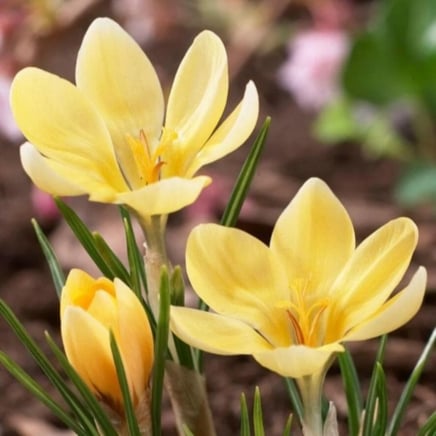

Sieberi Tricolor Crocus
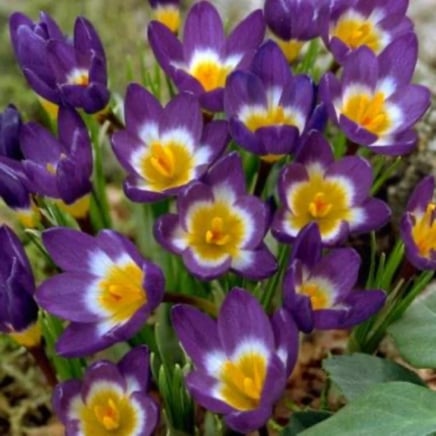
Sieberi Tricolor Crocus Bulbs
When to Plant Crocus Bulbs
Spring-flowering crocus are the most common, and they’re the varieties commonly available in garden centers and nurseries at the end of the growing season. Order them online from specialty sellers, or scour your local nurseries to see what they carry.
Spring-Flowering Crocus
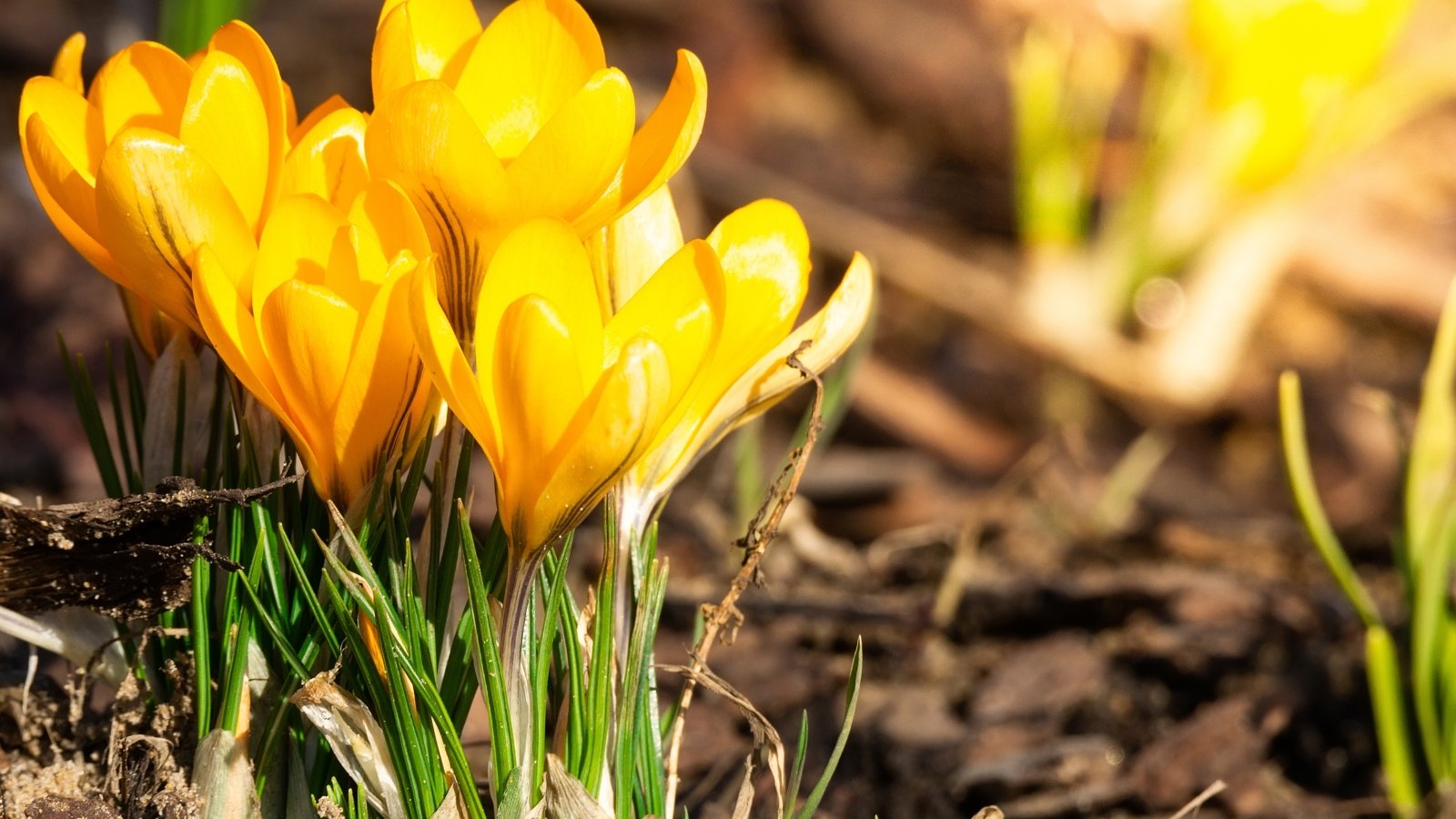 Delicate blossoms will brighten lawns before other flowers.
Delicate blossoms will brighten lawns before other flowers.The best time to plant crocus bulbs of spring-flowering species is fall. Get them in the ground anytime from late summer through early winter. They’ll look dormant in autumn, and they’ll have brown, fibrous coatings.
Spring-bloomers include species like Crocus chrysanthus, C. tommasinianus, and C. vernus. Plant them in clumps, or scatter them about the yard between your existing perennials.
If you have the space, plant crocus alongside daffodils, snowdrops, and tulips en masse. They’ll create an explosion of color, fragrance, and beauty next spring when they emerge after each other.
Fall-Flowering Crocus
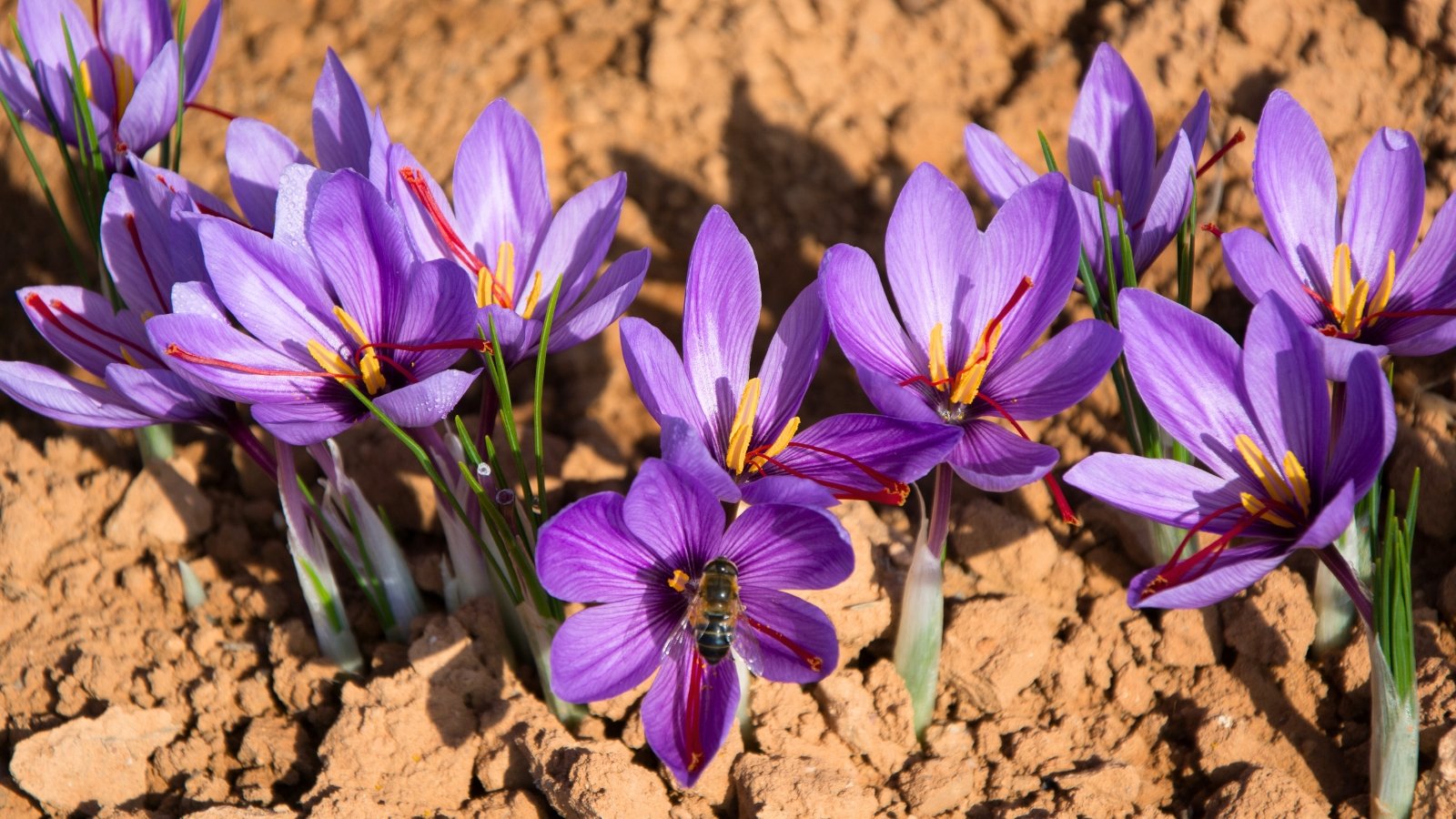 Edible blossoms emerge as the season slowly cools.
Edible blossoms emerge as the season slowly cools.Fall-flowering specimens begin blooming when the days shorten and cool in autumn. They’re available at garden centers and nurseries at the end of summer. Get them in the ground as soon as possible after purchasing them, and keep them moist until they sprout.
These will flower late in their first year. They’ll bloom at the normal time in future years as they grow attuned to the garden’s climate.
Fall-flowering species include the edible spice-producing saffron crocus, C. sativus. Or, look for C. etruscus, C. niveus, and C. speciosus. Hybrids and cultivars are also excellent performers in addition to these species.
How to Plant Crocus Bulbs
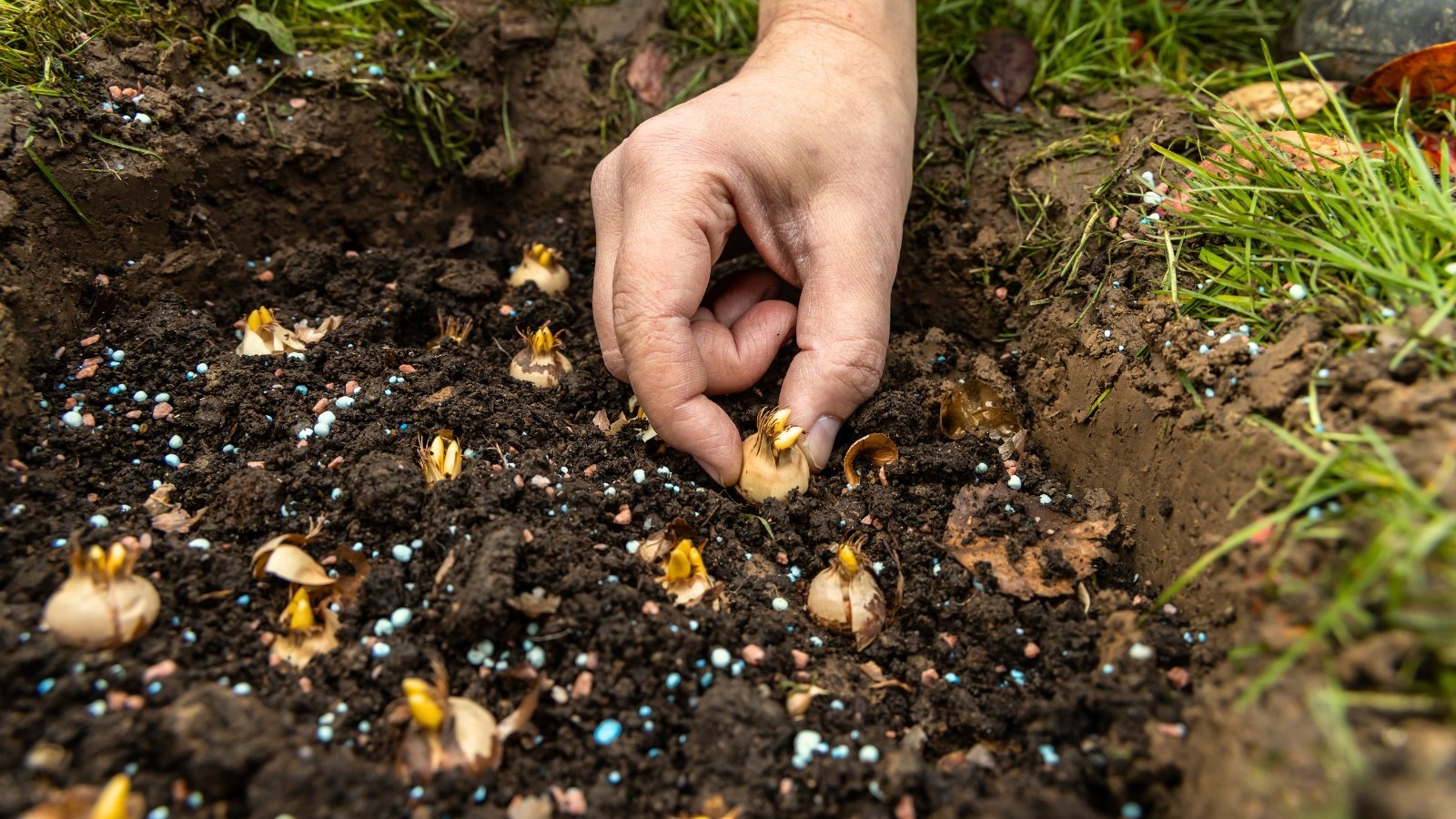 Group small corms tightly for a colorful display.
Group small corms tightly for a colorful display.The process to plant crocus bulbs is relatively simple. Decide whether you’d like to plant the flowers apart from each other or in clumps, and plot out the site. You’ll need a shovel or hand trowel to dig holes, and some compost or potting soil for planting.
The corms benefit from a deep planting between three and four inches below the ground. Plant large ones alone, separating each with four or five inches of space from the next one. Group small bulbs together to form tight clumps.
Cover the holes, water them well, and wait for shoots to appear. Add compost onto the surface of the soil to feed and insulate the bulbs while they grow.
These perennials appreciate loamy, well-drained soil. They dislike soggy, wet conditions, and they’ll suffer if there’s standing water. Ensure you plant crocus bulbs in a proper site with good soil and full sun or partial shade.
Transplant Potted Crocus
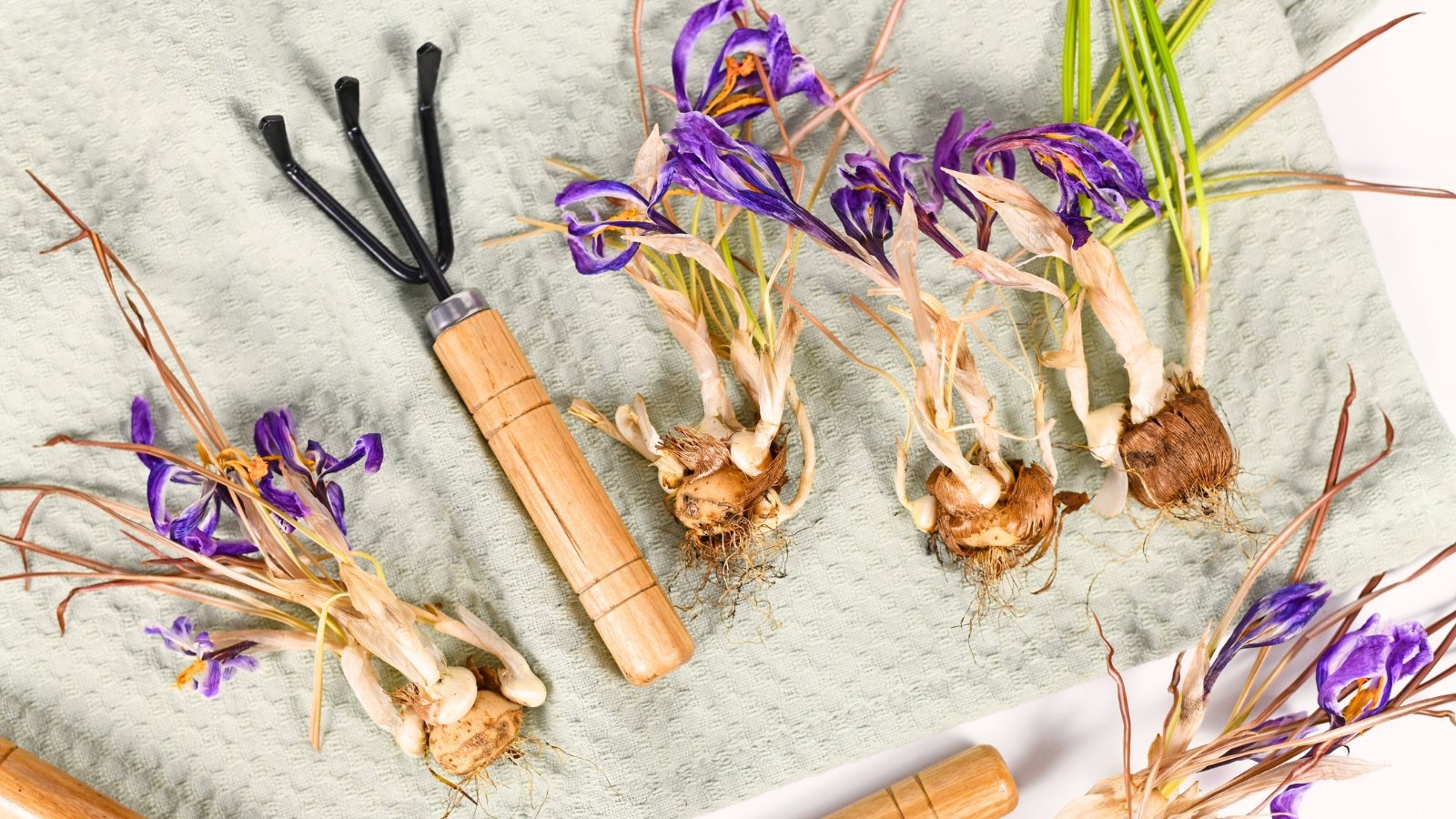 Wait for leaves to wither before handling the plants.
Wait for leaves to wither before handling the plants.If you bought living plants in containers, you’ll want to let them finish blooming before moving them. They dislike disruption during the growing phase. After the flowers and leaves wither, begin to remove the bulbs from the pots. Don’t throw them out. Plant them instead!
Dust off the bulbs, and let them dry for a day. Remove any mushy or rotting plants, and discard dead leaves, stems, and flowers. Keep the bulbs that are in the best condition.
Store fall-blooming bulbs until August or September, and keep spring-blooming ones until the fall. Store them in paper bags in a cool, dark, and dry location, like a pantry or closet, until you’re ready for planting.
Grow Crocus in Containers
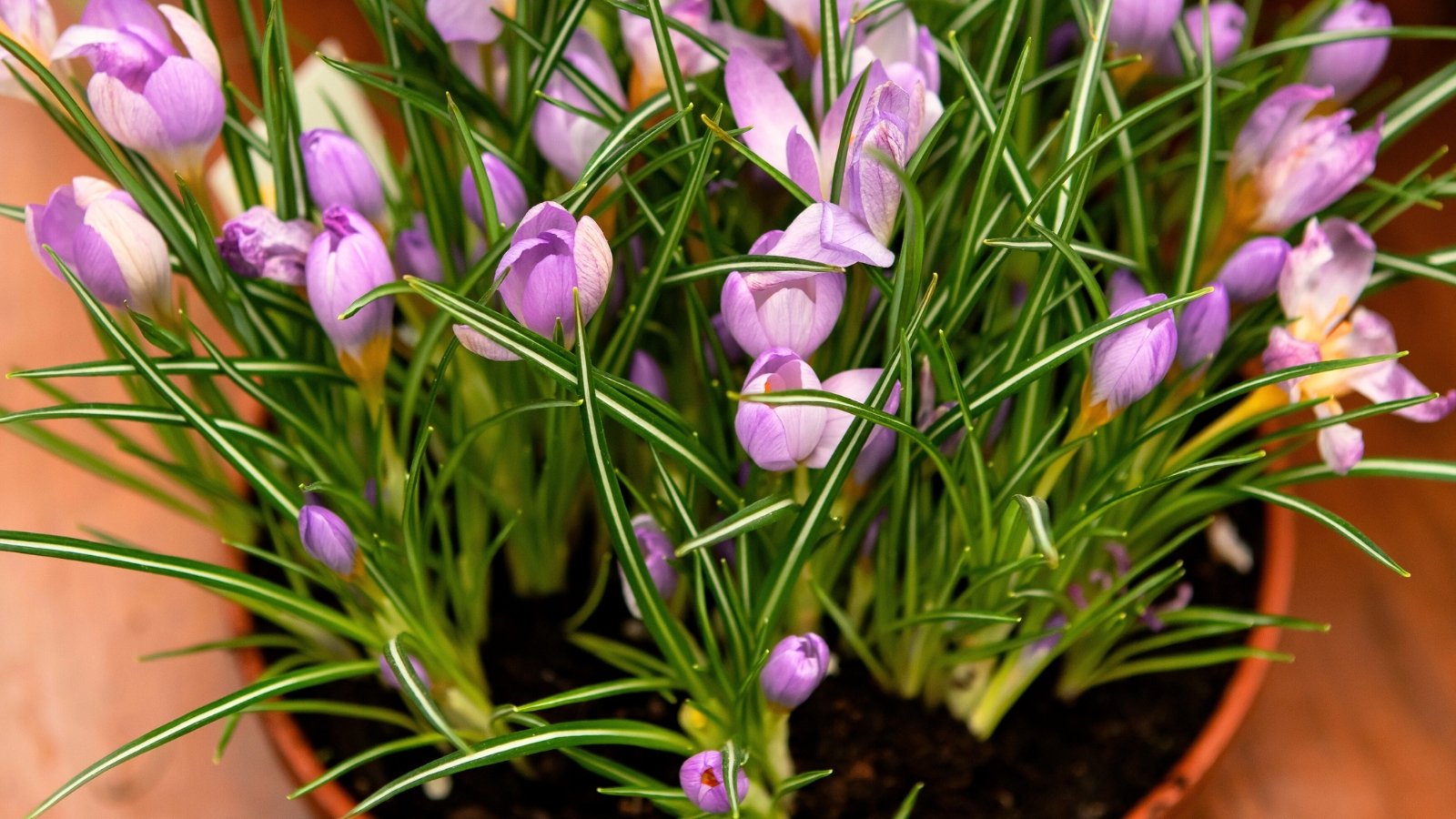 Potted species thrive when the soil drains really well.
Potted species thrive when the soil drains really well.Some species benefit from pot culture. They’ll grow better in containers than in the ground, as they appreciate sharp drainage and warm temperatures. Species like C. niveus like growing in pots, and others appreciate growing in them for a season or two.
Combine these bulbs with others, like snowdrops and tulips, for a superb spring display. Then, remove the bulbs when they’re dormant and store them until next year’s planting season.
Plant the crocus bulbs three inches deep in containers, and grow them in free-draining soil mixes. Add perlite, vermiculite, or pumice to your compost blend to ensure there’s sufficient drainage for the roots.
Repot potted specimens every two years. Divide them while you repot them, and move the divisions into new pots or into your garden. You can see that these perennials are gifts that keep on giving!
Don’t Forget Aftercare
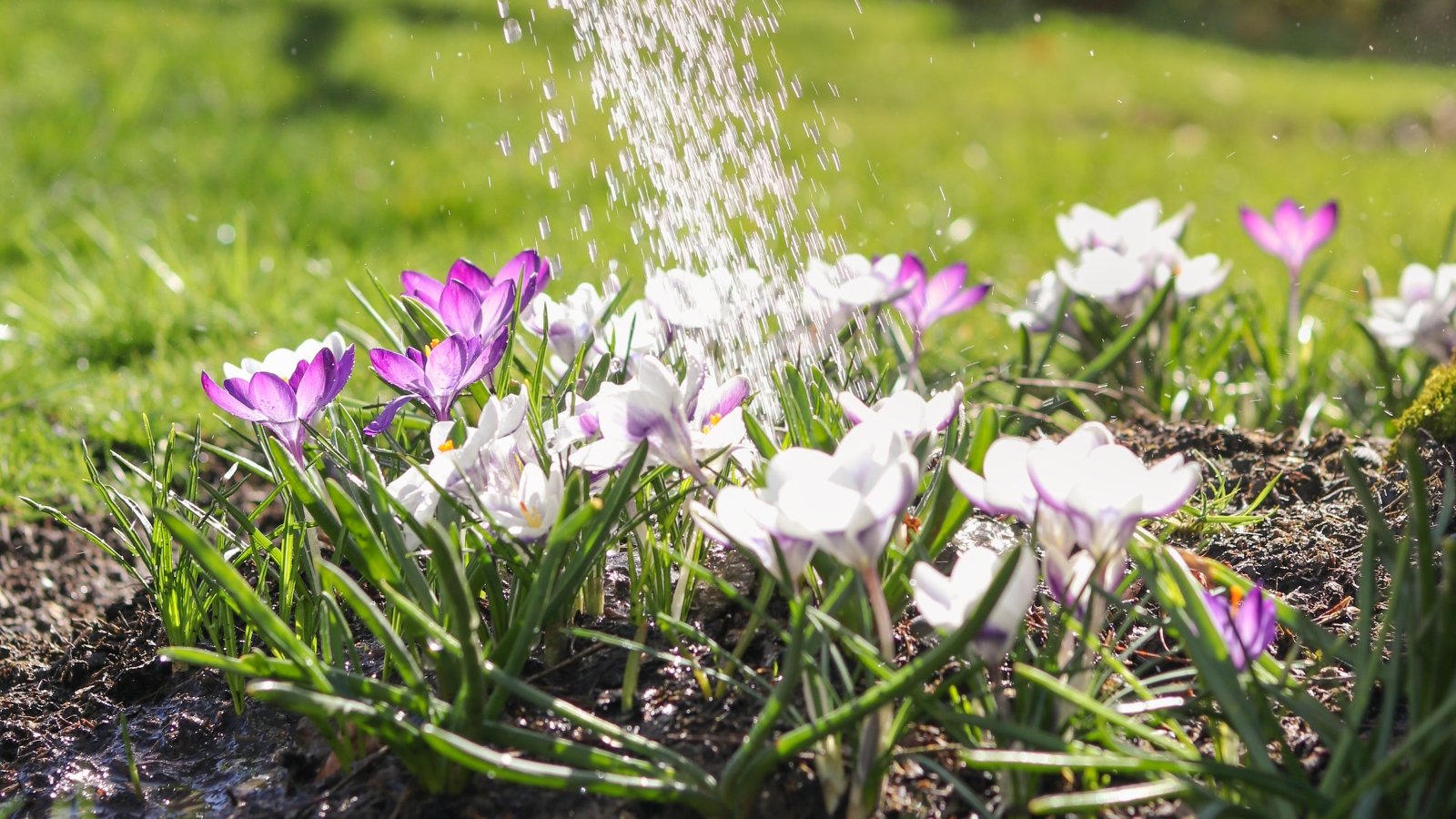 Keep soil moist while avoiding soggy, unhealthy conditions.
Keep soil moist while avoiding soggy, unhealthy conditions.Aftercare is crucial in keeping your flowers happy, healthy, and thriving. Keep them moist, but not soggy, while they grow. Ensure they have sufficient sunlight, with three or more hours of daily direct sunlight. Watch for slugs and hungry rodents, like squirrels and rats.
Wait to cut or mow the foliage after the blooms disappear. The plants use the leaves to photosynthesize and gather energy. Then, when their season is over, they die back, and the bulb pulls the nutrients from the leaves into its storage tissues.
After the leaves fade completely, you may mow or cut them. Crocus take well to lawns, like snowdrops. They’ll pop up in late winter and early spring before the lawn is growing. Then, they’ll fade and tolerate mowing when it’s time to mow the lawn in late spring.
Key Takeaways
- Plant spring-blooming crocus in the fall, and fall-blooming types in late summer and early fall.
- Keep the bulbs moist while they’re growing, and give them a dry culture when they’re dormant.
- Plant the bulbs in single holes, or group them together in clumps to create large drifts of blooms.
- Wait to transplant potted specimens until after their leaves wither. Dig up the bulbs and store them until planting time.
Frequently Asked Questions
It’s best to plant them at the proper planting period, from late summer through fall. Wait until the proper time if you forgot to plant, and keep the bulbs in cool, dark, and dry conditions until then.
No month is perfect, and the ideal month depends on the species in question. Most types benefit from planting in September.
Bury them three to four inches deep below the surface, and let them sprout up between the grass blades. Wait until their foliage fades completely before mowing the lawn.


 2 days ago
14
2 days ago
14
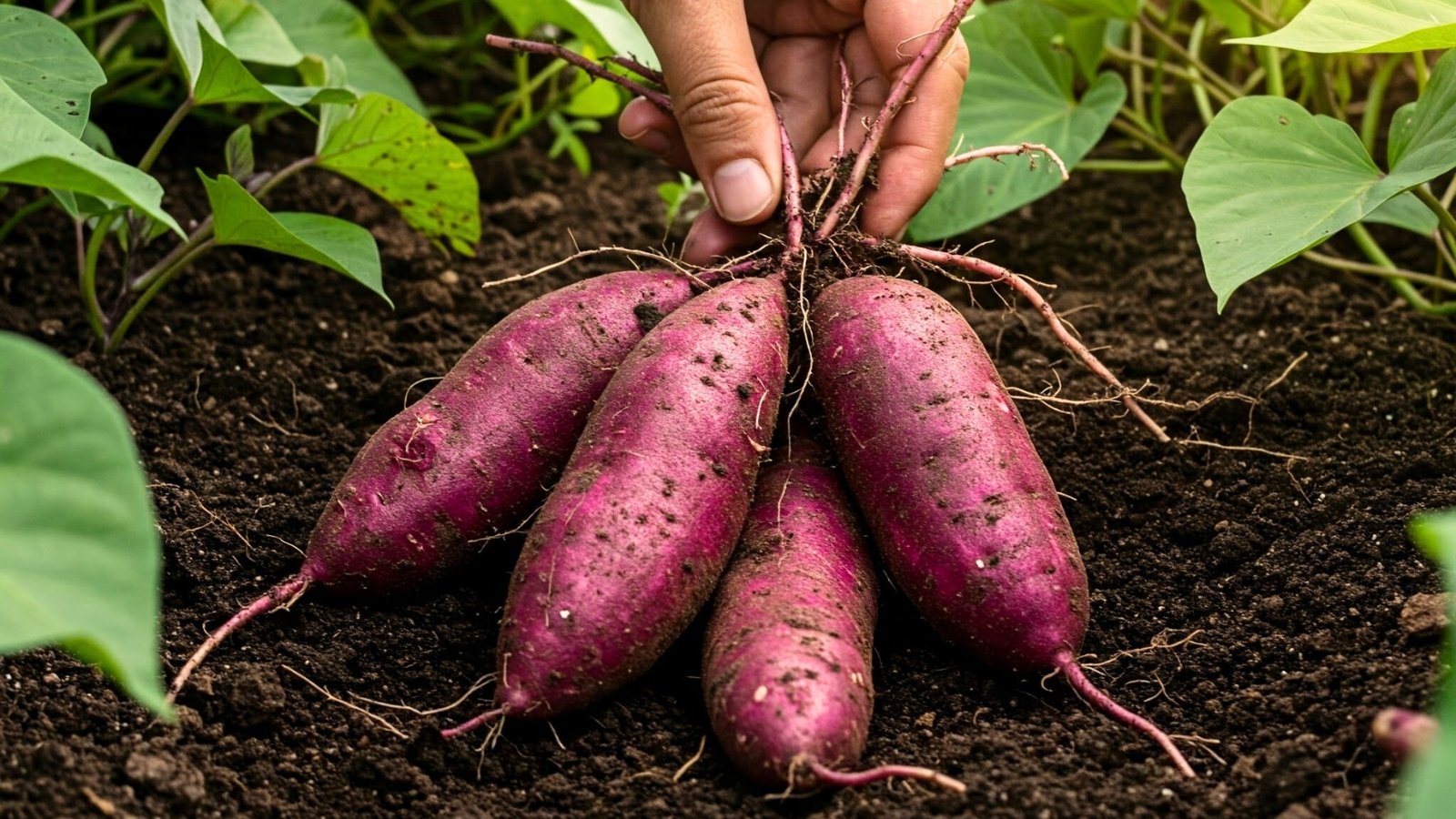
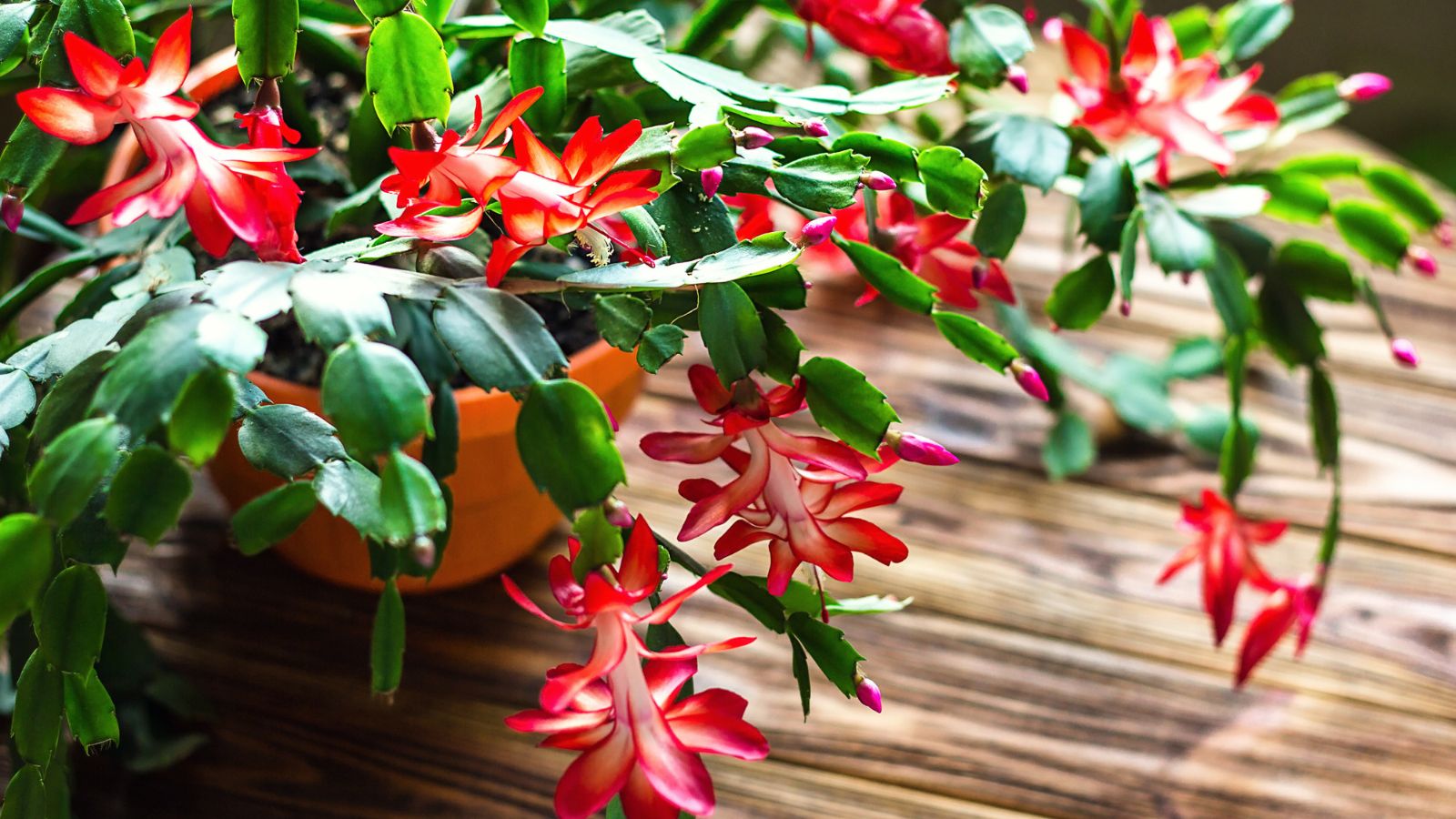

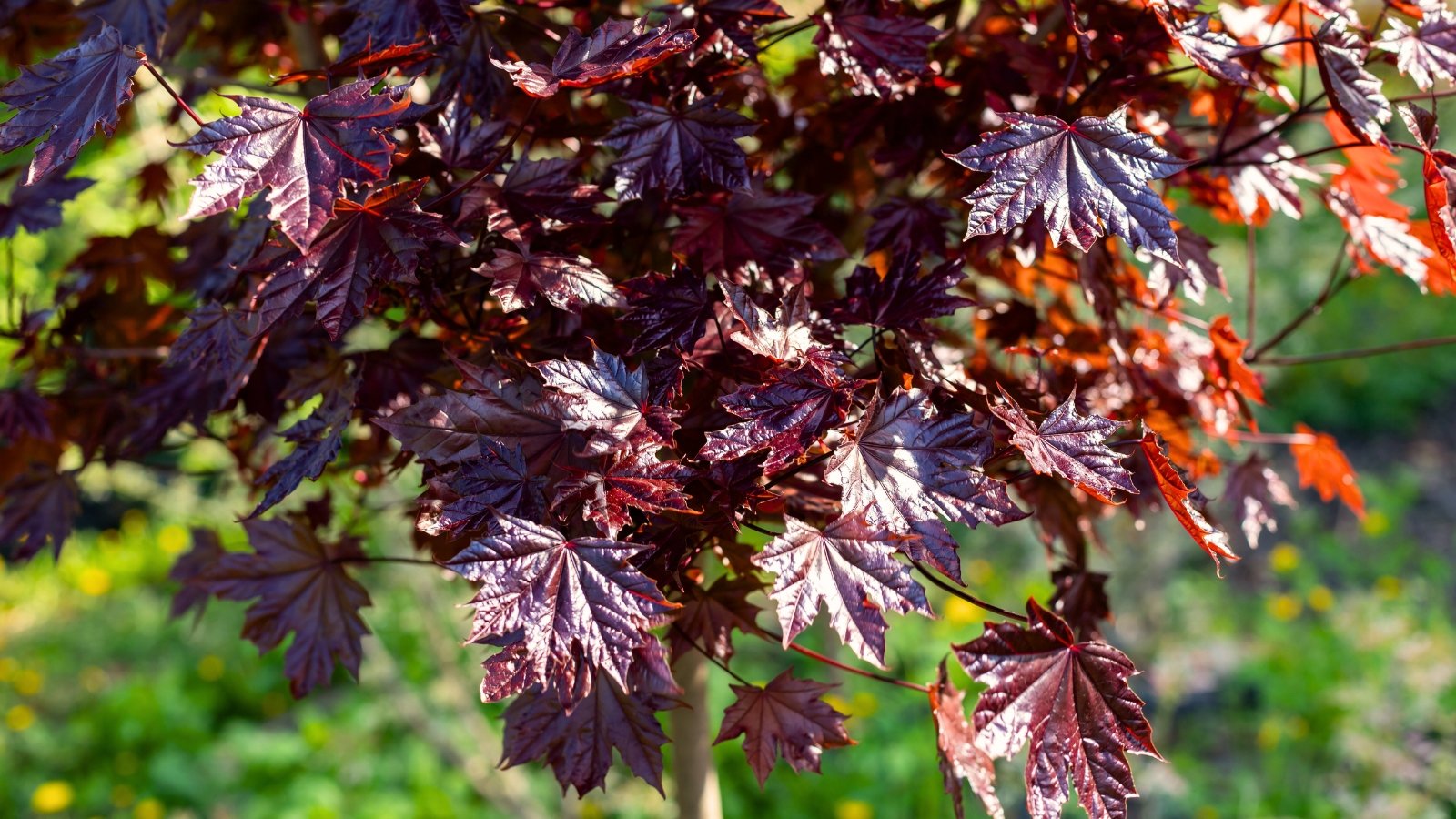

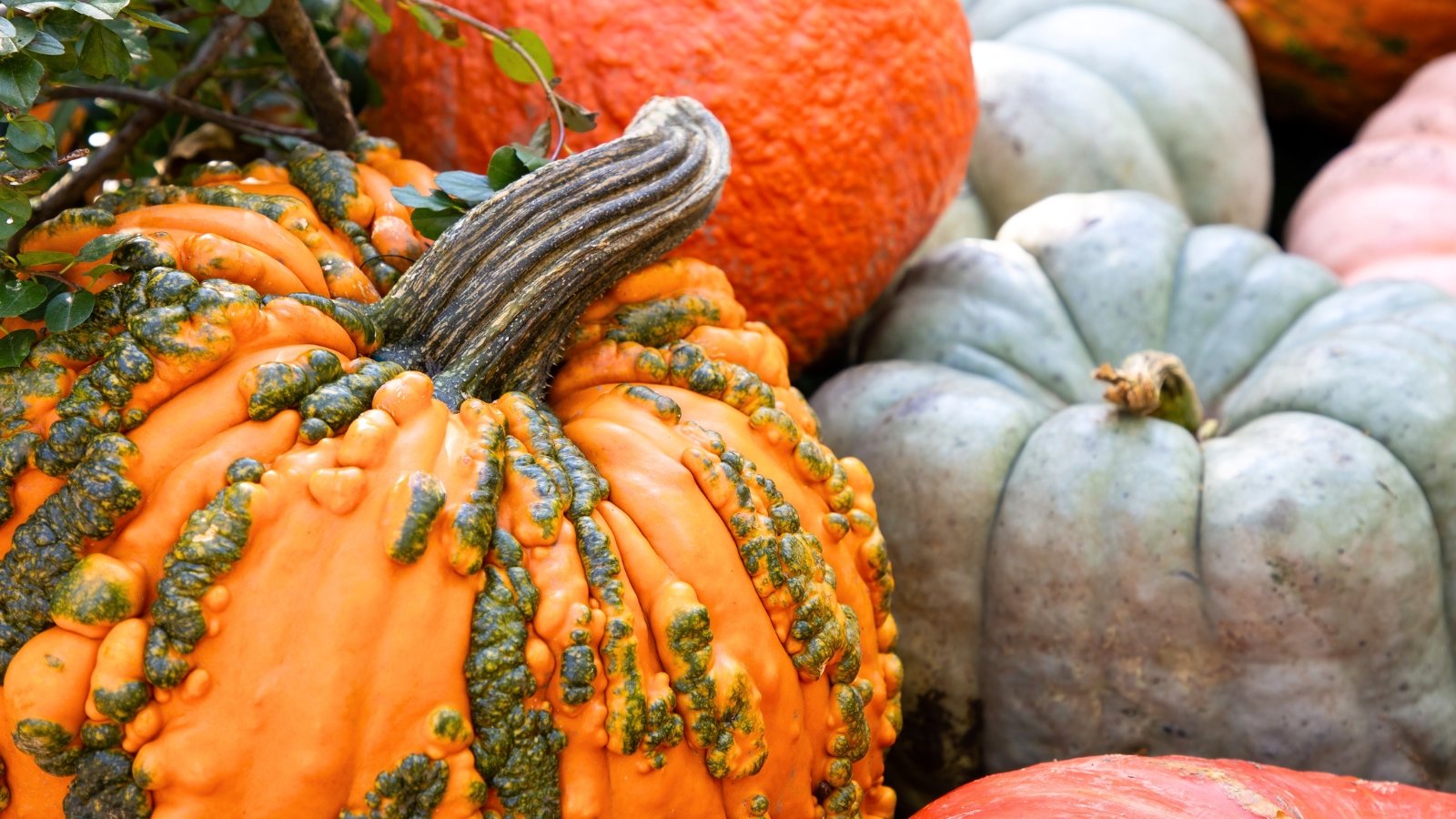
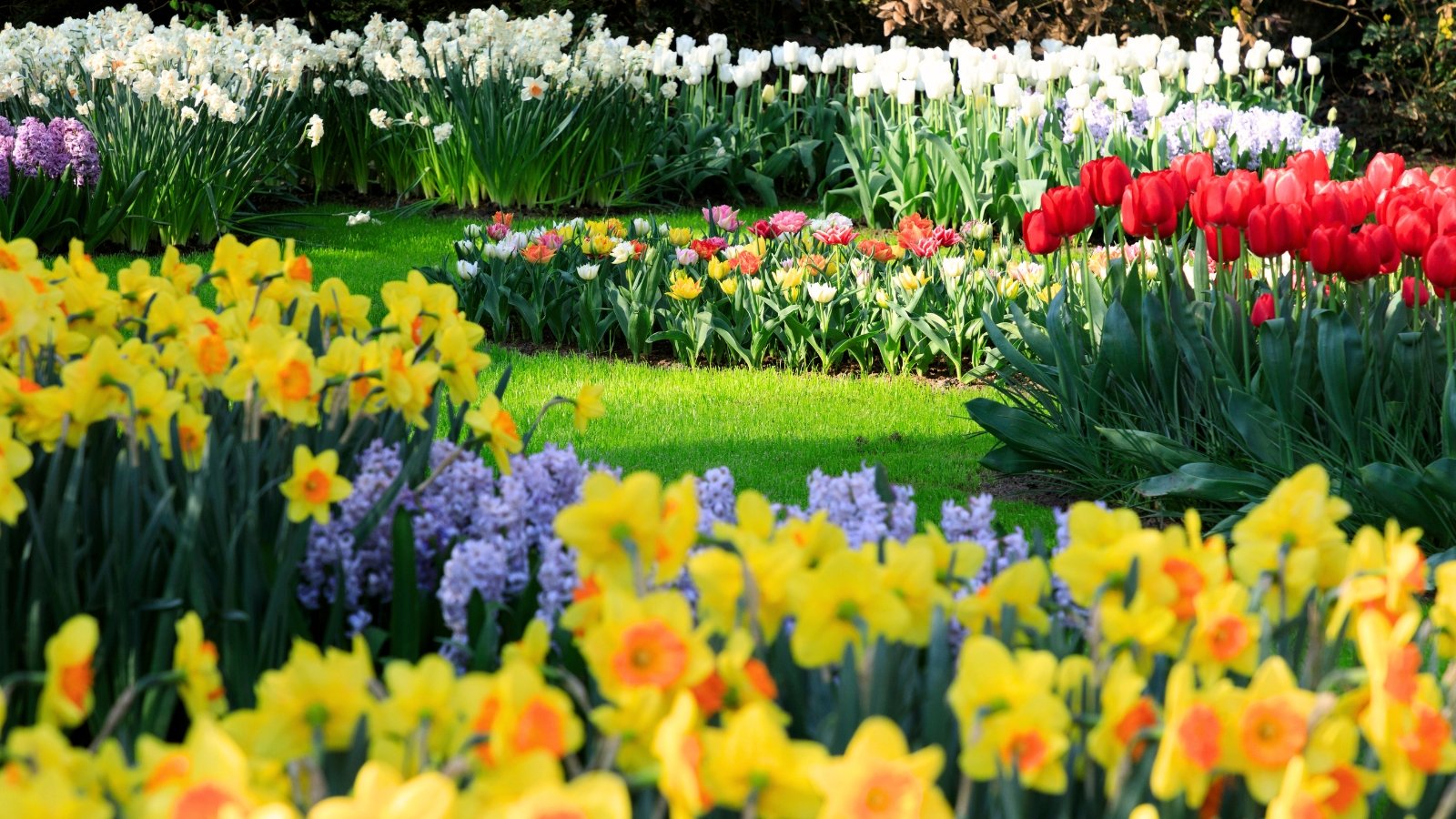














 English (US) ·
English (US) ·  French (CA) ·
French (CA) ·